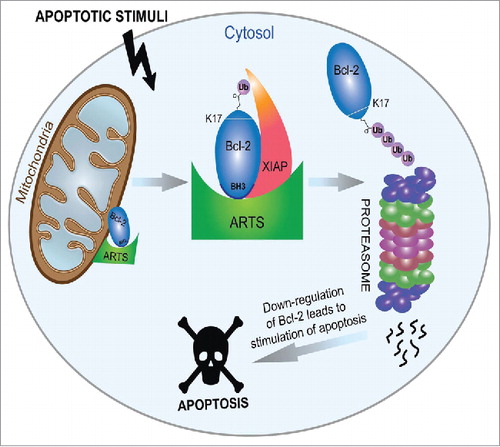Figures & data
Figure 1. Regulation of Bcl-2 stability by ARTS and XIAP. ARTS brings XIAP and Bcl-2 into a ternary complex leading to ubiquitylation and degradation of Bcl-2 by XIAP to promote apoptosis. In living cells both ARTS and Bcl-2 are localized at the outer membrane of the mitochondria. Upon induction of apoptosis ARTS and Bcl-2 accumulate in the cytosol. ARTS binds directly to both XIAP and to the BH3 domain in Bcl-2 enabling the formation of ternary complex. Thus, ARTS serves as an adaptor protein bringing XIAP containing an E3-ligase activity in close proximity to Bcl-2. This induces the ubiquitylation of lysine 17 (K17) in Bcl-2 and its degradation by the proteasome. Down regulation of Bcl-2 levels promotes a series of cellular events leading to caspase activation and apoptosis (adapted from).Citation7

